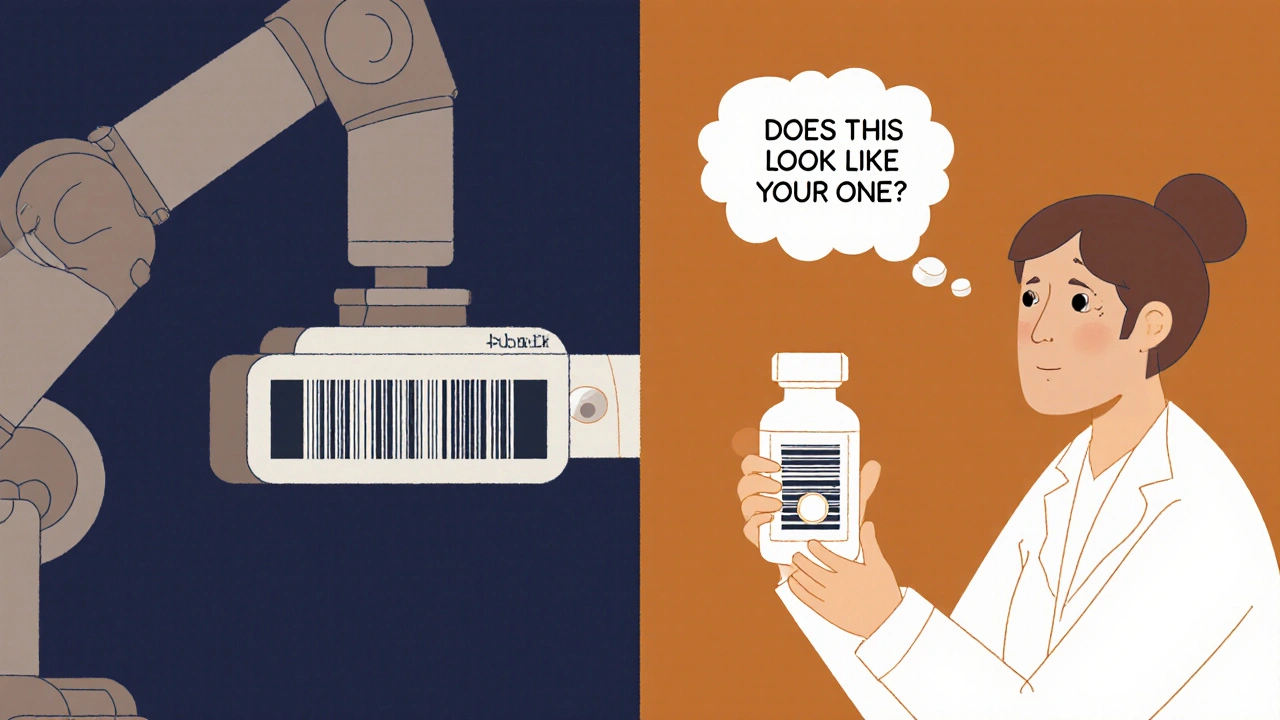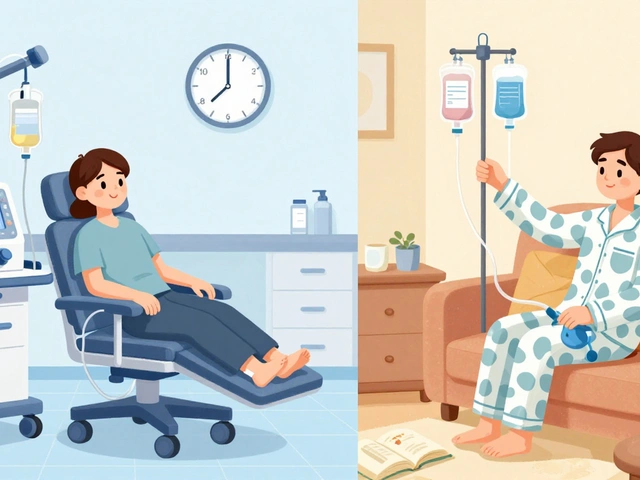Every year, over 51 million dispensing errors happen in U.S. community pharmacies. Most of these mistakes never reach patients-not because of barcode scanners or double-check systems, but because a pharmacist asked a simple question: "What is this medicine for?"
That’s the power of patient counseling. It’s not just about giving instructions. It’s the last real safety net before a pill leaves the counter. When done right, it catches errors that machines miss-wrong strength, wrong drug, wrong patient, wrong instructions. And the data shows it works: 83% of dispensing errors are found and fixed during these short conversations.
Why Counseling Beats Technology
Barcodes scan labels. Double-checks compare prescriptions. But neither can ask, "Does this look like what you usually take?" or "How do you usually take your blood pressure pill?"
Technology catches about 53% of errors. Pharmacist double-checks catch 67%. But when you talk to the patient, you catch 83%. Why? Because patients notice things systems don’t. They remember their old pill color. They know their usual dose. They’ve had side effects before. They might say, "This tablet is smaller than my last bottle," or "I’ve never taken a blue pill for diabetes before."
Look-alike drugs like lisinopril and losartan are common culprits. Insulin types get mixed up. Opioid prescriptions are often mislabeled. These errors fly under the radar of automated systems-but patients catch them. The National Institute for Safe Medication Practices says 1 in 5 errors involve high-alert medications. Patient counseling is the only tool that checks both the physical pill and the patient’s understanding of it.
The Four Critical Checks
Effective counseling isn’t random chatting. It’s a structured verification process. Here’s what works, based on evidence from the UConn School of Pharmacy, APhA, and NABP:
- Confirm the purpose - Don’t ask, "Is this for your blood pressure?" Ask, "What condition are you taking this for?" Open-ended questions find 3.2 times more errors than yes/no ones. A patient might say, "I think it’s for my joint pain," when it’s actually for heart failure. That’s a red flag.
- Verify the instructions - Use the teach-back method. Ask the patient to show you how they’ll take it. Do they think they should take it with food? At night? With water? If they can’t explain it, they won’t take it right. This alone boosts error detection by 68%.
- Check the appearance - Show the patient the pill. Ask, "Does this look like your last prescription?" Color, shape, imprint-these details matter. A 2023 Walgreens audit found that asking this question caught 29% of look-alike errors. One patient noticed her new metformin was round instead of oval-and it was the wrong drug.
- Review interactions and allergies - Don’t just scan the record. Ask, "Have you had any bad reactions to medicines lately?" or "Are you taking anything new?" Patients forget to mention supplements, OTC meds, or herbal products. One pharmacist caught a dangerous interaction between a new blood thinner and a popular turmeric supplement because the patient mentioned it during counseling.
That’s the core. Do these four things, and you’re not just counseling-you’re auditing.
Time Matters-A Lot
You can’t rush this. Research shows you need at least 2.3 minutes per patient to catch most errors. Each extra 30 seconds cuts error rates by 12.7%. But here’s the problem: most pharmacists spend only 1.2 minutes.
Why? Corporate pressure. High volume. Long lines. CVS and Walgreens pilots found that when pharmacists were pushed to move faster, counseling time dropped-and so did error detection. One pharmacy chain reported counseling effectiveness fell from 83% to 41% when pharmacists handled more than 14 prescriptions per hour.
Independent pharmacies do better. They average 78% counseling compliance versus 62% in chains. Why? Less pressure. More time. And they know it saves money. One NCPA survey found that pharmacies using structured counseling saw a 19% drop in malpractice insurance premiums.
Don’t cut corners. Even if it slows you down, it saves lives-and lawsuits.

Who Needs It Most
Not every patient needs the same level of counseling. Focus your energy where the risk is highest.
- Patients over 65 - Dosing errors are 3.7 times more likely to cause harm. They often take 5+ medications. A simple mix-up can land them in the ER.
- Patients with low health literacy - 42% of undetected errors happen here. They might nod along but not understand. Teach-back is essential.
- New prescriptions - Especially for high-alert drugs like insulin, warfarin, or opioids. Counseling catches 91% of errors on new meds.
- Complex regimens - Five or more medications? Error detection jumps to 87% with good counseling.
For routine refills? The error detection rate drops to 33%. That’s because patients assume everything’s the same. That’s when they miss changes-like a new manufacturer, different color, or altered dose. Always ask, "Has anything changed?" even on refills.
Real Stories, Real Catches
Here’s what this looks like in practice:
- A patient picked up a new prescription for insulin. The pharmacist asked, "What kind of insulin is this?" The patient said, "I think it’s the long-acting one." But the label said rapid-acting. The pharmacist caught a dangerous mix-up. The patient had been on long-acting for years. The wrong one could’ve caused severe hypoglycemia.
- A woman got a refill for her blood thinner. She said, "This tablet looks smaller than before." The pharmacist checked-same drug, same dose, but different generic brand. The patient had taken the old version for 5 years and noticed the size change. The pharmacist confirmed it was correct, but the patient’s attention prevented a potential error if the wrong drug had been dispensed.
- A man picked up a new antidepressant. He said, "I don’t remember taking a pill like this before." The pharmacist asked what he’d been on. He’d been on sertraline. The new prescription was citalopram. The pharmacist realized the prescriber had switched drugs without updating the patient. The patient was confused and anxious. The pharmacist called the doctor and corrected it.
These aren’t hypotheticals. These are real cases from CVS, Walgreens, and independent pharmacies. Each one was caught because someone asked the right question.

Barriers and Solutions
There are obstacles. Patients decline counseling 18.7% of the time. Staff are stretched thin. Documentation is inconsistent.
Here’s how to fix it:
- Use pharmacy technicians - In 42 states, techs can do preliminary counseling under pharmacist supervision. They can verify patient identity, ask about appearance, and flag concerns. The pharmacist then does the final check. This increases effective counseling time by 37%.
- Use digital tools - New systems like Surescripts’ Counseling Checkpoint API let pharmacists log verification steps right in the workflow. One pharmacy reported 22% faster sessions without losing accuracy.
- Document everything - NABP’s 2022 standards require recording what was discussed. Pharmacies that document counseling reduce liability claims by 44%. Don’t just say "counseling provided." Write: "Patient confirmed medication is for hypertension, takes once daily, recognizes tablet as white oval with "10" imprint, no new allergies, no interactions with current meds."
- Train for health literacy - Use plain language. Avoid medical terms. Show pictures. Ask, "Can you explain this to your spouse?" This isn’t optional-it’s essential.
The Bigger Picture
Medication errors cost the U.S. healthcare system over $21 billion a year. Most of those are preventable. Patient counseling is the cheapest, most effective tool we have. It costs just $0.87 per prescription. Barcode systems cost $1.35. Double-checks cost $2.10.
And it’s not just about safety. Patients notice. A 2023 review of 1,247 patient ratings found 89% appreciate thorough counseling. One wrote: "The pharmacist caught that my new blood thinner was the wrong strength when I said it looked smaller than before. I felt safe."
Regulators are catching on too. Medicare now ties 8.5% of reimbursement to documented counseling that includes error verification. Thirty-four states require it for opioids. A federal bill in 2024 could make it mandatory for all high-alert drugs.
This isn’t just good practice. It’s becoming the standard. And the pharmacies that do it well? They’ll gain 12-15% more market share by 2027, not because they’re cheaper, but because patients trust them more.
Final Thought
You don’t need fancy tech to prevent errors. You need a conversation. A question. A moment of attention.
Every pill you dispense carries risk. But every patient you talk to becomes part of the solution. They’re not just recipients-they’re your final quality check. And in a world of automation, that human connection is irreplaceable.



daniel lopez
19 November / 2025Let me tell you something the FDA doesn't want you to know-this whole 'counseling' thing is just a distraction from the real problem: corporate pharmacies are using AI to replace pharmacists and cut costs. They don't care if you live or die, as long as the profit margin stays above 22%. The 83% error rate? Fake data pushed by pharma lobbyists. I've seen patients get the wrong meds because the system auto-filled the prescription and the pharmacist was too busy scanning barcodes to even look up. They're not saving lives-they're covering up a $200 billion scam.